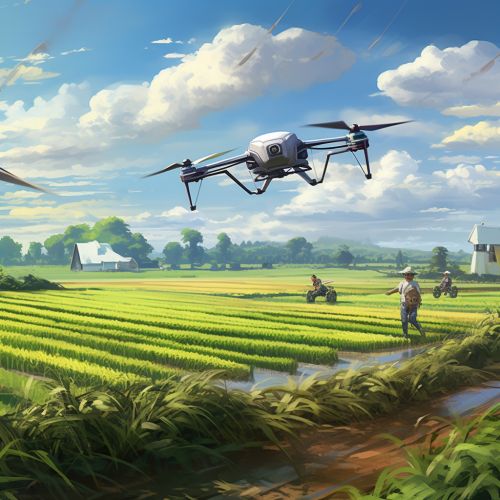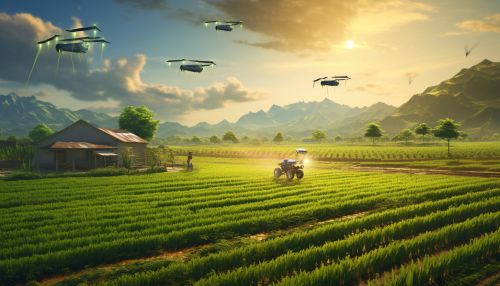Agriculture
History of Agriculture
Agriculture, the cultivation of plants and rearing of animals for human use, has a long and complex history that dates back thousands of years. The transition from hunter-gatherer societies to settled farming communities was a significant turning point in human history, enabling the development of more complex societies and technologies.
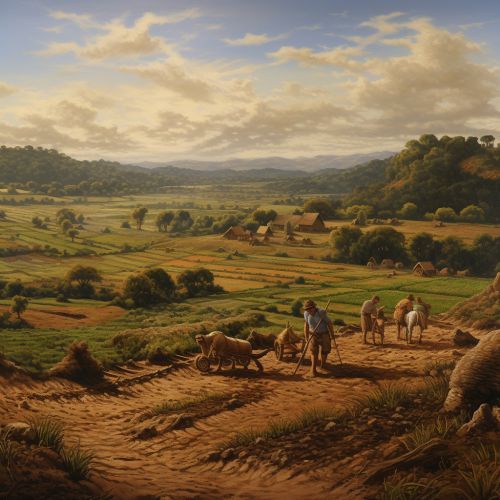
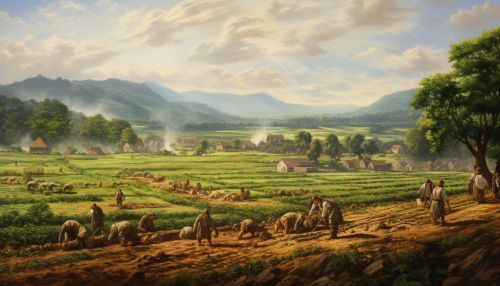
The earliest evidence of agriculture dates back to around 10,000 BC in the Fertile Crescent, a region in the Middle East which includes modern-day Iraq, Syria, Lebanon, Israel, Palestine, Jordan, Egypt, and parts of Turkey and Iran. Early farmers in this region cultivated wheat and barley, and reared livestock such as sheep, goats, and pigs.
Agriculture spread from the Fertile Crescent to other parts of the world over the next several millennia. By 7000 BC, farming was widespread in the Middle East, and by 6000 BC, it had spread to Europe. In the Americas, agriculture developed independently, with the cultivation of maize, beans, and squash beginning around 3500 BC.
The development of agriculture led to significant changes in human societies. It allowed for the growth of larger, sedentary communities, which in turn led to the development of complex social structures and the rise of civilization.
Agricultural Practices and Techniques
Over the centuries, farmers have developed a wide range of practices and techniques to improve the yield and quality of their crops. These include crop rotation, irrigation, the use of fertilizers, and selective breeding of plants and animals.
Crop rotation is the practice of growing different types of crops in the same area in sequential seasons. This helps to maintain soil fertility and reduce the build-up of pests and diseases. The Three Sisters method of crop rotation, which involves planting corn, beans, and squash together, was developed by Native American farmers and is still used today.
Irrigation involves the artificial application of water to soil or land to assist in the growth of crops. This is particularly important in arid regions where rainfall is insufficient for crop growth. The earliest evidence of irrigation dates back to the 6th millennium BC in the Zagros Mountains in Iran.
The use of fertilizers to enhance soil fertility is another key agricultural practice. Early farmers used animal manure, ashes, and green manure to improve soil fertility. Today, synthetic fertilizers are widely used, although there is growing interest in organic farming methods that rely on natural fertilizers.
Selective breeding involves choosing specific plants or animals to breed based on certain traits in order to produce offspring with those traits. This has been used to improve crop yields, enhance the nutritional content of food, and develop disease-resistant varieties of crops.
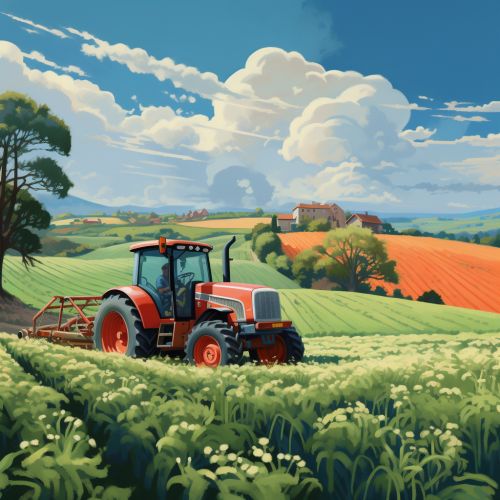
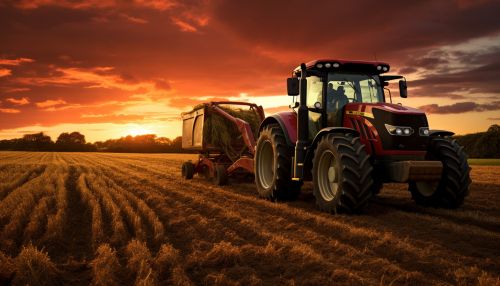
Modern Agriculture
The 20th century saw significant advances in agricultural technology, leading to dramatic increases in crop yields. This period, known as the Green Revolution, was characterized by the widespread adoption of high-yield varieties of crops, the use of synthetic fertilizers and pesticides, and the use of modern farming equipment.
However, modern agriculture also poses a number of challenges. The use of synthetic fertilizers and pesticides has led to environmental pollution and the loss of biodiversity. Intensive farming practices have also led to soil degradation and the overuse of water resources.
In response to these challenges, there is growing interest in sustainable agriculture practices. These aim to produce food in a way that is environmentally friendly, economically viable, and socially just. Sustainable agriculture practices include organic farming, agroforestry, and permaculture.
Future of Agriculture
Looking to the future, agriculture faces a number of challenges. These include the need to feed a growing global population, the impacts of climate change, and the need to reduce the environmental impact of farming.
One potential solution to these challenges is the development of precision agriculture. This involves the use of technology, such as GPS and remote sensing, to monitor crop growth and soil conditions, allowing farmers to apply water, fertilizers, and pesticides more efficiently.
Another potential solution is the development of genetically modified (GM) crops. These have been engineered to have desirable traits, such as resistance to pests or diseases, or the ability to withstand harsh environmental conditions. However, the use of GM crops is controversial, with concerns about their impact on biodiversity and food security.
